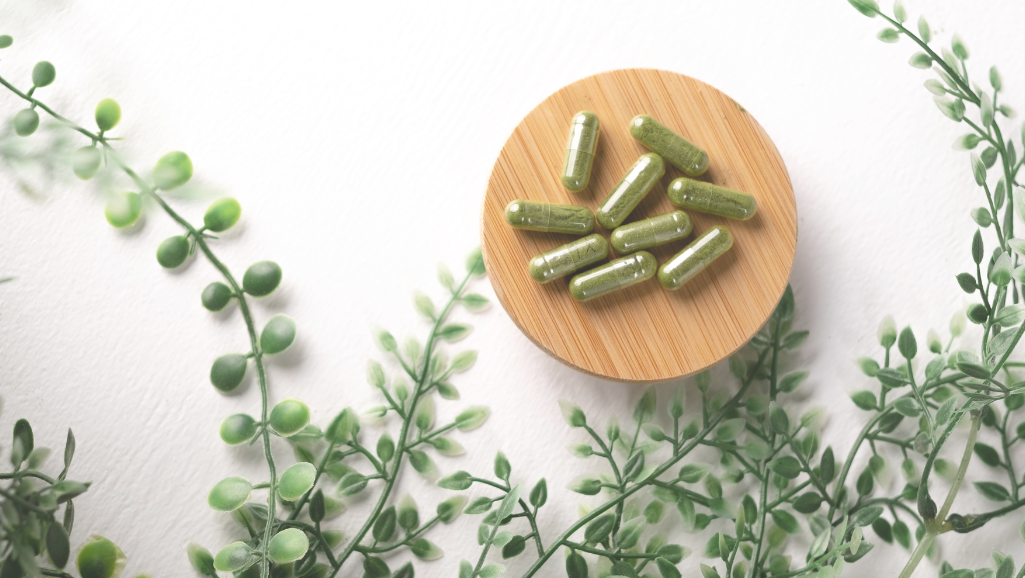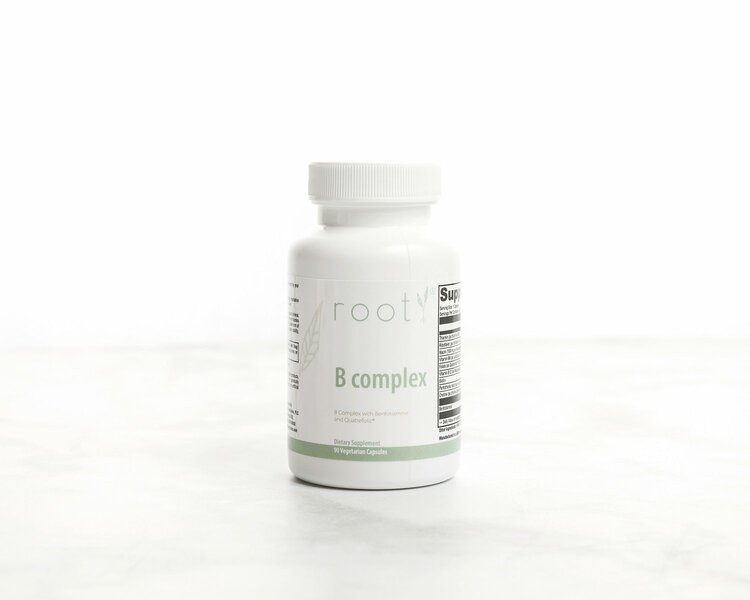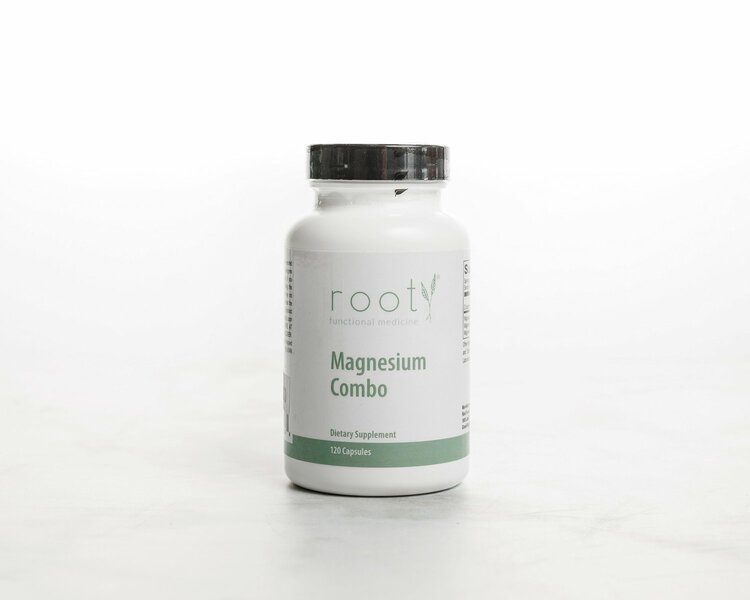
Magnesium for Period Cramps
An estimated 90 percent of women experience at least some symptoms of premenstrual syndrome (PMS) during their reproductive years (1). Common PMS symptoms include bloating, moodiness, and cramping.
In this article, we’ll discuss the effectiveness of using magnesium for period cramps, how to choose the best supplement form, and tips for eating more magnesium-rich foods.
What is Magnesium?
Magnesium is an essential mineral and electrolyte with hundreds of functions in the body. For example, magnesium plays a crucial role in thyroid function, blood sugar balance, estrogen detoxification, and more.
The Recommended Dietary Allowance (RDA) for magnesium is 320 milligrams (mg) per day for women. If you’re pregnant or breastfeeding, your body requires at least 360 mg of magnesium. However, the majority of Americans fail to meet their magnesium requirements with diet alone (2). Plus, women with certain health conditions, like polycystic ovary syndrome (PCOS), are more likely to have insufficient magnesium levels (3). Read more about taking magnesium for PCOS.
Magnesium for Period Cramps
There are two main ways in which magnesium may ease period cramps. First of all, your uterus is a hollow muscular organ. During your monthly period, the uterus contracts to shed its inner lining. Magnesium has a special role in helping your muscles relax. When the body does not have enough magnesium, your muscles may contract too much. This is why taking magnesium is often recommended for people with muscle cramps, like athletes and pregnant women.
Furthermore, the cells in the lining of your uterus release prostaglandins during menstruation. These are natural chemicals in the body with hormone-like qualities. Overproduction of prostaglandins is associated with more severe period pain (4). Some researchers hypothesize that magnesium may reduce period cramps by lowering prostaglandin levels.
A few studies have found that magnesium effectively reduces period cramps compared to placebo (5). Plus, one study found taking vitamin B6 with magnesium may be more effective than magnesium alone (6).
Magnesium has also shown promise in preventing migraines, reducing anxiety related to PMS, and balancing your blood sugar (which is key to a healthy period).
Magnesium Supplements
Magnesium oxide is the most common supplemental form available in drug stores. However, this type of magnesium is not well absorbed and can cause side effects like bloating and diarrhea. If you suffer from constipation, magnesium citrate is a better option as it offers a gentle laxative effect in addition to other added benefits. However, we usually recommend a combination supplement, which provides a trio of magnesium citrate, glycinate, and malate to reap all the benefits of this mineral. Many women also find comfort in taking epsom salt baths, which is a naturally-occuring magnesium salt known to promote muscle relaxation.
We recommend starting with 200-250 mg of magnesium per day. Most of the research studies find that the benefits of magnesium for period cramps are magnified after at least two months of use. So, do not be discouraged if you do not see immediate results.
Magnesium-Rich Foods
Most people do not eat enough magnesium to meet their daily needs. While magnesium supplements have their own benefits, adopting a “food first” philosophy allows you to gain many other benefits of these wholesome foods like fiber, phytonutrients, and complimenting minerals. Here are a few ways to incorporate more magnesium-rich foods into your meals and snacks:
- Pumpkin Seeds: sprinkle onto a colorful salad, add to trail mix, blend into homemade pesto sauce
- Chia Seeds: add to overnight oats, chia seed pudding
- Almonds: spread almond butter onto sliced apples, add chopped almonds to your chicken salad, or enjoy roasted almonds as a filling snack
- Black Beans: add into a southwest egg bake or make a quick taco salad
- Edamame: snack on edamame pods or add to your stir fry dinners
Root Causes of Painful Periods
Your monthly period should not be painful or heavy. If you are experiencing PMS symptoms, heavy periods, and/or painful cramping, there is an underlying reason. While taking magnesium for period cramps may reduce the severity, it is often just one piece of the puzzle. Various conditions, like PCOS, endometriosis, and even Hashimoto’s autoimmune thyroid disease are associated with heavy or painful periods. Learn more about our in-depth functional medicine membership program where you work with both a doctor and a dietitian to address your period problems.
Key Takeaways
Magnesium is an essential mineral with hundreds of functions in the body like lowering inflammation and muscle relaxation. Most people are not meeting their daily magnesium requirements with diet alone. Eating more magnesium-rich foods and supplementing with around 200 mg of magnesium per day may reduce the severity of period cramps.

Get to the Root at Home
Curious about where you should start your functional medicine journey?
Take our Get to the Root Quiz so you can start working towards reversing disease and optimizing your health at the Root cause.
Take the Get to the Root Quiz
Related Articles

Anxiety and Hormone Balance
Imbalances in progesterone, thyroid hormones, cortisol, and vitamin D may all cause or worsen your anxiety. Treatment of these imbalances may include diet, lifestyle modifications, supplementation, and/or medication when needed.

Best Vitamins for Hormone Balance
The best vitamins and nutrients for hormone balance include b-vitamins, vitamin D, omega-3s, inositol, magnesium, and NAC. These can be obtained via diet and supplementation.

